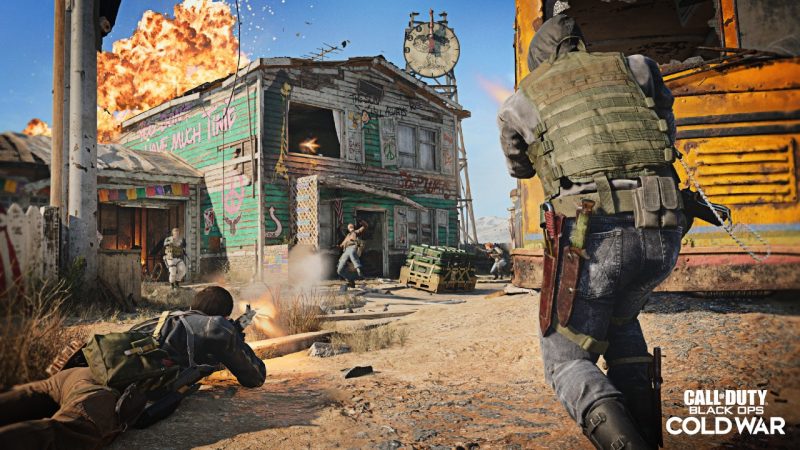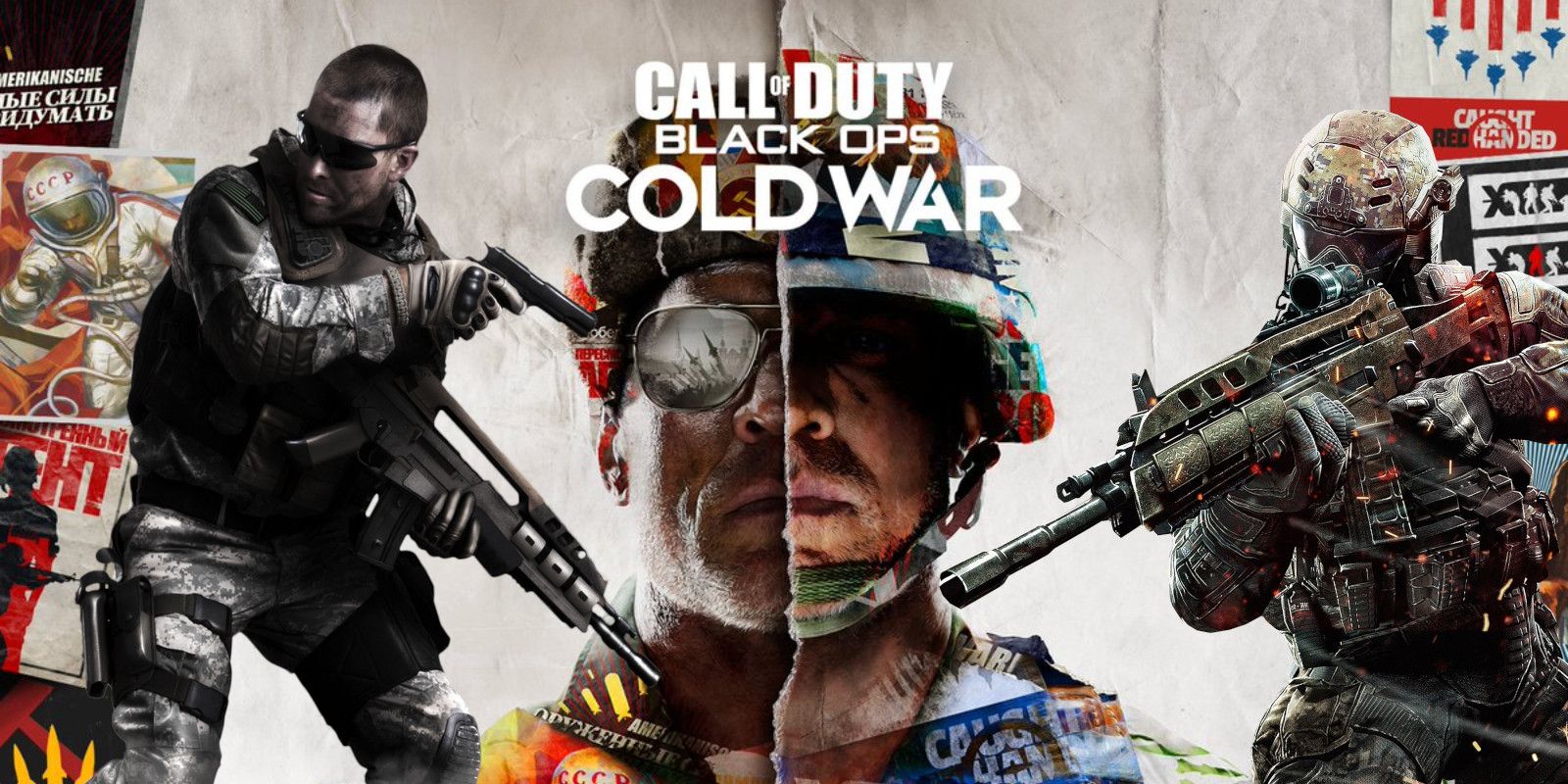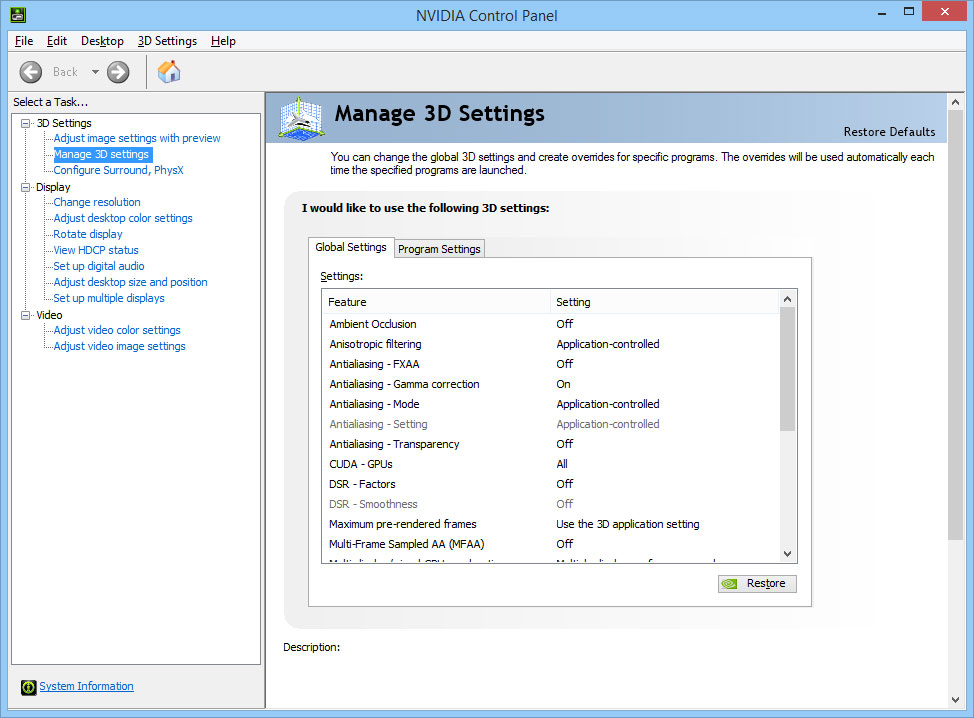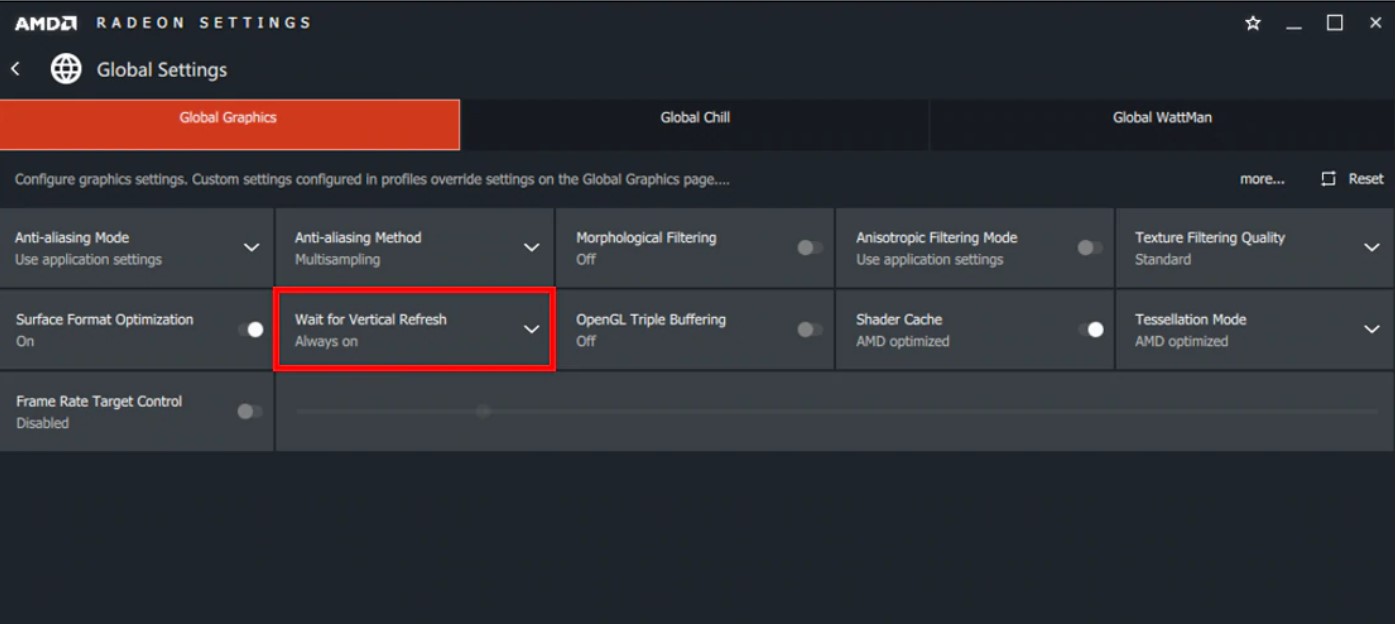After the incredible success of Infinity Ward’s Call of Duty: Modern Warfare and Warzone, Treyarch had a lot of expectations on its shoulders. And, with the previous entries in the Black Ops series being lackluster, the developer had to rethink its strategy with the new game. Thanks to a collaborative effort with Sledgehammer and Raven though, Treyarch has managed to deliver a Call of Duty experience that truly lives up to the expectations with Call of Duty: Black Ops Cold War.
With an unconventionally long name, Call of Duty: Black Ops Cold War is exactly what you’d think it is. Set in the Cold War era a few years after the events of the original Black Ops, this game takes us on the quest to find and neutralize a soviet spy who is about to wreak some havoc. Familiar faces like Alex Mason, Frank Woods, and Jason Hudson also return to the forefront as they are assigned this mission by none other than the US President at the time, Ronald Reagan.
Also read – The Best Weapons to use in Call of Duty: Black Ops Cold War
In terms of gameplay mechanics, calling Black Ops Cold War an evolution rather than a revolution would be fair. The game isn’t inherently different from its predecessors. However, if you’re coming over from Modern Warfare, you’ll find Cold War games to be much faster. In addition to that, the move back to 70s weapons also puts a new spin on the gameplay. Overall though, the gunplay and the movement are incredibly fluid, as you’d expect from a Call of Duty game and it will please both newer and veteran fans alike.
Warzone isn’t changing much
As far as Warzone is concerned, Activision has decided to not get rid of it completely, and rightly so. Call of Duty: Warzone is still one of the most played games on the planet and it would be stupid to do a hard reset on the much-revered battle royale. However, a new map and setting have been introduced to Warzone with the release of Black Ops Cold War and it also includes new weapons, vehicles, and everything in between. The core gameplay though remains the same as before.

So, if the new Call of Duty: Black Ops Cold War is your cup of tea but Modern Warfare and Warzone aren’t, you won’t find a new battle royale Call of Duty experience to suit your needs. Don’t worry though, since the Black Ops Cold War campaign and multiplayer makeup for its lack of a separate battle royale experience.
Call of Duty: Black Ops Cold War still has performance issues
When Call of Duty: Modern Warfare was launched last year, it had tons of bugs and performance issues. The game consistently crashed on all platforms and was full of game-breaking glitches. The Xbox One version in particular was completely broken. However, after a couple of big patches, the game was eventually fixed. Unlike Call of Duty: Modern Warfare though, Black Ops Cold War has had a more or less stable launch.
The bugs and performance issues within Call of Duty: Black Ops Cold War are not nearly as drastic or as bad as Modern Warfare. However, that doesn’t mean that the game is completely fine. Due to the game being on so many platforms including next-gen consoles, bugs and errors were always going to appear. Different issues like the infamous UI Error or the Fatal Error still persist within the game. Furthermore, the confusion caused by many different versions of the game didn’t help its case either.
Having said that, arguably the biggest issue was the fact that Black Ops Cold War is a resource hog. Due to things like raytracing and a generally pretty demanding engine, this year’s CoD entry is definitely one of the most demanding games of the year. Additionally, the release on so many consoles also introduced many performance issues like random lag spikes, low FPS, crashes, stutters, freezes among other things for Call of Duty: Black Ops Cold War.
So, if you’re experiencing any of these issues within the game, just apply the fixes given below. These have been tested and collected from many different users and will most definitely result in a performance boost on most rigs.
1. Call of Duty: Black Ops Cold War System Requirements
As mentioned above, Call of Duty: Black Ops Cold War is a gorgeous looking game and that comes at a price. Thus, the game requires a pretty beefy setup to run at stable framerates. In addition to that, if you’re up for turning on real-time raytracing, you’re going to need the newer RTX 3000 cards for anything above 1440p.
However, since it is a competitive shooter, not playing it at 4K and turning the resolution down in favor of a better framerate might be the best option. Furthermore, at lower resolutions, turning on raytracing with DLSS is really helpful if you want a higher FPS count.
Minimum System Requirements:
Operating System: Windows 7 64-Bit (SP1) or Windows 10 64-Bit (1803 or later)
Processor: Intel Core i3-4340 or AMD FX-6300
RAM: 8GB RAM
HDD: Multiplayer only: 35GB HD space / Everything: 82GB HD space
Graphics Card: NVIDIA GeForce GTX 670 / GeForce GTX 1650 or AMD Radeon HD 7950
As you can see from the minimum requirements, running Call of Duty: Black Ops Cold War at 1080P with low settings is actually not that demanding. However, these specifications don’t result in great gameplay and you’ll notice FPS drops regularly. So, if you want to play, you should at least have something beefier than this.
Recommended System Requirements:
Operating System: Windows 10 64 Bit (latest Service Pack)
Processor: Intel Core i5-2500K or AMD Ryzen R5 1600X
RAM: 12GB RAM
HDD: 82GB HD space
Graphics Card: NVIDIA GeForce GTX 970 / GTX 1660 Super or Radeon R9 390 / AMD RX 580
If you’re looking for a more optimal 60 FPS experience, having recommended specs is definitely the way to go. Additionally, you could even turn some settings down for a 60+ FPS gameplay. However, all of this is still at 1080p though so 1440p is a bit more demanding still.
Raytracing or Competitive System Requirements:
Operating System: Windows 10 64 Bit
Processor: Intel Core i7-8770k or AMD Ryzen 1800X
RAM: 16GB RAM
HDD: 82GB HD space
Graphics Card: NVIDIA GeForce RTX 3070 (Radeon RX Vega64 Graphics for non-RT)
If you’re serious about your gaming, you’ll need a pretty beefy setup for Call of Duty: Black Ops Cold War. In terms of raytracing, anything below an RTX 3060Ti or equivalent is just not viable enough for stable framerates. However, if you’re looking to play at 120 FPS or higher, you do need to turn off RTX.
4K Ultra Raytracing Requirements:
Operating System: Windows 10 64 Bit (latest Service Pack)
Processor: Intel Core i7 4770k or AMD equivalent
RAM: 16GB RAM
HDD: 125GB HD space†
Graphics Card: NVIDIA GeForce RTX 3080 or higher
If you wish to go all out and enjoy the game at full 4K resolution with all of its raytracing glory, you’ll have to dish out for a higher-end NVIDIA RTX graphics card. Having said that, the processor requirements aren’t actually that high.
These settings are only good for the campaign though as you’d still prefer a higher framerate while playing competitive online multiplayer games.
2. Download NVIDIA/AMD Graphics Card Drivers for Call of Duty: Black Ops Cold War
Call of Duty: Black Ops Cold War has been out for a little less than 2 months now and while the game has received multiple updates, it still isn’t quite up to the mark. When the game was originally released in November, NVIDIA released its game-ready drivers with it. On the AMD side, the graphics card manufacturer also released patches for its own graphics cards.
However, there’s always more room for improvement and the performance is still shaky in parts. Usually, graphics card drivers are updated automatically for both NVIDIA and AMD users. However, a lot of people turn off automatic updates to avoid any chances of getting a faulty patch. If you’re one of those people and are experiencing performance issues in Call of Duty: Black Ops Cold War, it is definitely recommended to update your graphics card drivers to the latest version.
Both NVIDIA and AMD have their own utilities to update graphics card drivers. However, if you wish to do it manually, you can head over to the links given below. NVIDIA and AMD are always pushing out updates that improve performance for specific games so always be on the lookout for updates.
3. Disable Integrated Graphics on a laptop
If you’re using a laptop or have a motherboard with an integrated graphics card, your PC can switch over to it and hinder performance. Usually, this happens when your laptop is trying to save battery life since the integrated graphics chip is much more efficient and lower-powered as compared to a fully-fledged graphics card.
This can result in an obvious dip in performance. So, what you want to do in this scenario is to force the usage of your dedicated graphics card for the game that you’re trying to play i.e. Call of Duty: Black Ops Cold War. Firstly, you need to turn off power-saving features that automatically revert the GPU preference. This is usually present within windows settings which you should set to Performance mode.
Both NVIDIA and AMD also have their own control panel utilities that allow you to enforce the usage of a dedicated graphics card. You can do this for either a specific game or for all applications. Just follow the steps below:
- Head over to the NVIDIA Control Panel by right-clicking an empty space on your desktop and selecting it.
- Once you’re in, choose the Manage 3D options menu on the top left.
- From the list of games, find and select Call of Duty: Black Ops Cold War. If you wish to enforce dedicated graphics card usage for all applications though, select Global Settings instead.
- In case you’re unable to find the game you’re looking for within the list, you can select the browse option and find the executable file for the game instead.
- Now, select the performance mode/NVIDIA Graphics Card option and you’re good to go!
4. Graphics Card Settings for NVIDIA and AMD
Besides the in-game settings, both AMD and NVIDIA Graphics Cards have their own settings as well. These usually range from things like anti-aliasing and texture filtering to proprietary features like AMD Radeon Boost. The default settings are generally fine for most people. However, if you’re experiencing performance issues in Call of Duty: Black Ops Cold War, tweaking these settings will definitely make a big difference.
Furthermore, a lot of the proprietary AMD and NVIDIA features only add a post-processing burden on the GPUs so while they may improve visual quality, they’re not ideal for performance. So, turning them off can also result in a pretty significant performance boost. So, you need to tweak these settings to eek out the best performance out of your graphics card and boost FPS for a game like Call of Duty: Black Ops Cold War.
Here are the optimal graphics card settings for both AMD and NVIDIA users:
NVIDIA Graphics Card Users:
NVIDIA users don’t have to turn off many proprietary or post-processing features. However, there are still plenty of options that can be tweaked to get some extra performance out of your graphics card. Just follow these steps:
- Head into the NVIDIA Control Panel and select the Manage 3D Settings option that you did earlier.
- If you wish to change these settings for Call of Duty: Black Ops Cold War only, you can select the game from the Program List. If it isn’t there, select the browse option and look for the executable file for the game in the installation folder. If you want to apply these to all applications though, just select the Global Settings tab.
- Firstly, set the Power Management option to its highest value i.e. performance mode.
- Now, disable Image Sharpening and Low Latency mode. Usually, these add a post-processing burden on the GPU so it’s best to turn them off.
- Under pre-rendered frames, set the value to 1 so the GPU load doesn’t divert to loading extra frames. This can help with random FPS drops.
- For the texture filtering quality option, select performance mode. This favors performance over visual quality and can boost FPS a lot.
- Turn on G-Sync if your monitor supports it to reduce screen-tearing.
AMD Graphics Card Users:
AMD has a lot of proprietary features for its Radeon graphics cards. However, most of these features can be pretty useless if you’re looking to gain performance. In fact, they can sometimes even be a hindrance so turning these off is definitely a good shout. Other than that, it is very similar to the NVIDIA settings above. So, just follow these steps:
- Open the AMD Radeon Settings Control Panel to change your graphics card settings.
- Select the Global Graphics option to change these settings for all applications on your PC.
- As mentioned above, turn off proprietary AMD settings like Radeon Anti-Lag, Radeon Chill, and Radeon Boost.
- Now, you need to turn off the post-processing effects and filters that favor visual quality instead of performance. These include things like Max Tessellation Level, FPS Target Control, Image Sharpening Mode, Vertical Sync, Anisotropic Filtering, and Open GL Triple Buffering.
- You also want to select the highest performance option for your GPU workload option. This would be the Graphics Mode in this case.
- Using AMD optimized mode for things like Tessellation and Shader Cache is also a good shout.
- And last but not the least, enable Surface Format Optimization and AMD FreeSync if your monitor supports it.
5. Make sure Call of Duty: Black Ops Cold War game files are intact
Most modern games are digitally downloaded, especially on PC. And games like Call of Duty: Black Ops Cold War are constantly being updated with new patches and features. However, since these downloads replace some older files and there is always a risk of the connection dropping off while downloading, you can actually end up with some corrupted game files.
In fact, many times, the main culprit behind frequent crashes or stutters is that corrupted or missing game file. Thankfully though, most new installers have the option to search through the game files and make sure that all of them are validated and not missing or corrupted. In case they are, the utility automatically redownloads those files to essentially repair your game.
For Call of Duty: Black Ops Cold War, you can also run this check straight from the Battle.net launcher. Just follow these steps:
- Open up the Battle.net launcher and from your games library, choose Call of Duty: Black Ops Cold War.
- Now select the Options Menu for the game (without launching it).
- Select the option that says Scan and Repair. This will initiate a scan for your game files. Once it is done, it will either prompt you that the game is fine or it will repair it for you.
- After the scan is complete, restart your PC and you should be good to go!
6. Adjust Graphics Settings for Call of Duty: Black Ops Cold War
Call of Duty: Black Ops Cold War has a lot of settings that you can tweak to improve performance. These graphics settings, however, can be a bit complex at times. Most people run with the auto-detect default settings. Having said that, since there is a lot of variation between hardware and thermals, using these settings is not the best option in most cases.
So, you should min-max these settings and get some additional performance out of your game. However, you don’t want to turn everything down either as that would just drastically decrease the image quality and make the game look bad. What you want is a good and efficient balance between visuals and performance. So, here are some optimal settings that you should turn up or down for Call of Duty: Black Ops Cold War:
- In the graphics settings within the game, the first thing you should do is to turn down Shadow Quality, Weapon Shadow, and Special Effect Shadows. Shadows can be incredibly taxing on your GPU and don’t add much visual detail to the scene either. You should also turn Dynamic Shadows to Self Only mode.
- For Texture Quality and Filtering Quality, having them high is the most ideal option for the best visuals. However, if you have a mid-range or a low-end GPU, turn them down to medium.
- You can keep most other settings at either Medium or High depending on your GPU. However, disabling Motion Blur and Weapon Motion Blur can also improve performance by a lot.
- And lastly, turn on Subsurface Scattering and set the Order Independent Transparency to High.
7. Play the game on a single display
A lot of people have multi-display setups for their gaming rigs. These can be especially good if you’re streaming or trying to be productive on the side. However, they don’t serve much purpose for anything other than that and can be a resource hog for your GPU at times. This is due to the fact that your GPU now has to push pixels to multiple displays rather than just one.
Not only that but a lot of games are also not well-optimized for multi-monitor setups and can have massive performance dips despite being present on one monitor. In such a case, all you have to do is to disconnect your other display and play the game on just one monitor. You can do that by pulling out the monitor’s HDMI or Display Port and restarting your PC.
8. Set Call of Duty: Black Ops Cold War to High Priority
Background processes can also take up a lot of resources while you’re trying to game. So, if you’re experiencing unusual performance dips within your game, some hidden process in the background can be the culprit behind it. In such a case, you can try to dedicate more resources to the game you’re trying to play i.e. Call of Duty: Black Ops Cold War.
All you need to do is to set the priority mode of the game to High in the Task Manager. You can do that by finding the Call of Duty: Black Ops Cold War’s process under the Details tab of Task Manager while it is running and then setting its priority to high or real-time.
Hopefully, one of these fixes or many of them combined would have given you a good enough FPS boost for a smooth game of Call of Duty: Black Ops Cold War. If not, you might have to contact the developer or wait for an official patch.
Call of Duty: Black Ops Cold War is out now on PC, PS4, PS5, Xbox One, and Xbox Series X|S. You can check it out right here.




